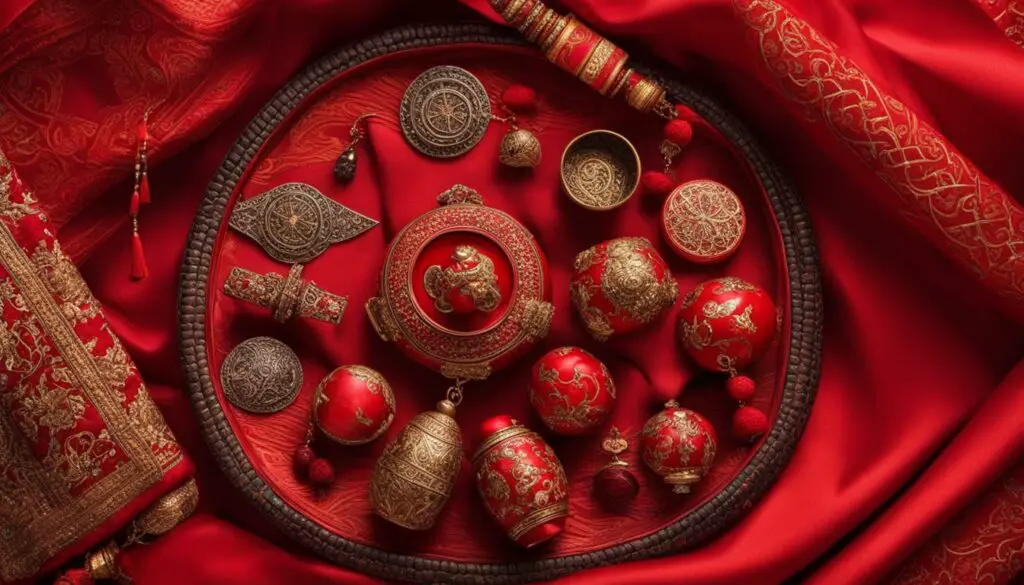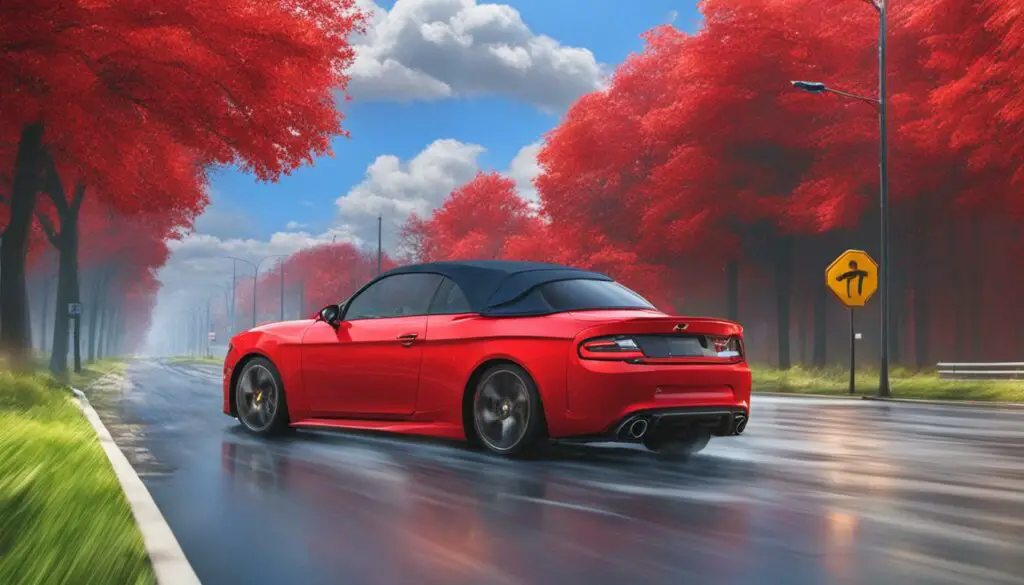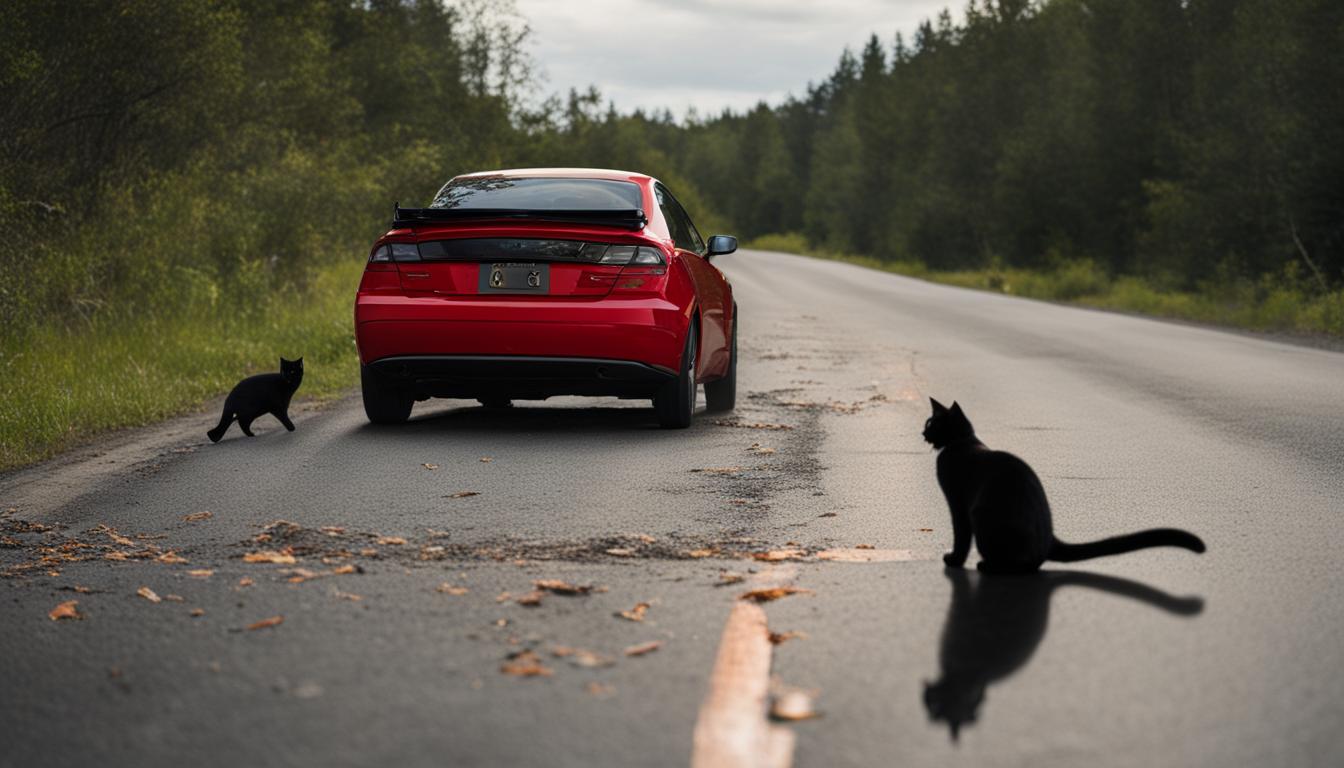Have you ever heard the superstition that red cars are bad luck? Perhaps you’ve even considered avoiding a vibrant red car for fear of accidents or mishaps. But is there any truth to this myth, or is it merely a belief passed down through generations? In this article, we’ll explore the origins of the myth of red cars being unlucky and examine whether there is any scientific evidence to support this claim.
From cultural and historical perspectives to personal experiences and scientific studies, we will delve into every possible angle of the red car superstition. So, let’s get started and separate fact from fiction when it comes to the luck of red cars.
Key Takeaways:
- Red cars have long been associated with superstitions and negative beliefs.
- The myth of red cars being unlucky is a pervasive belief passed down through generations.
- The psychology of color and individual experiences may contribute to perceptions of red cars and luck.
- There is no scientific evidence to support the belief that red cars are inherently bad luck.
- The color of a car ultimately comes down to personal choice, regardless of any supposed superstitions.
Superstitions About Red Cars
Red cars have been a subject of superstitions and negative beliefs for many years. Some people believe that owning or driving a red car can bring bad luck, accidents, or even increase the likelihood of receiving traffic tickets. Let’s explore some of the most prevalent superstitions related to red cars:
- Red cars attract more attention from the police: This is one of the most common beliefs about red cars. The idea is that red cars are more likely to get pulled over by the police, not just because they stand out, but because the color red is associated with danger and aggression.
- Red cars are more accident-prone: Another common belief is that red cars are more likely to be involved in accidents. Some people think that red cars are harder to see on the road, or that the color red makes people drive more recklessly.
- Red cars are more likely to get stolen: A third belief is that red cars are more attractive to car thieves. The idea is that the color red is eye-catching and makes the car easier to spot, which increases the likelihood of it being stolen.
These superstitions have been passed down through generations, and many people still believe them to be true. However, it is important to keep in mind that these beliefs are not based on any scientific evidence, and they are just myths.
Despite this, many people still hold onto their superstitions and may avoid buying or driving a red car because of them. Let’s explore the myth of red cars being unlucky further and see if there is any truth to it.
Myth of Red Cars Being Unlucky

Despite being around for centuries, the belief that red cars are unlucky remains widespread to this day. Negative beliefs surrounding red cars often stem from misconceptions and superstitions that lack any scientific evidence. Let’s look at some of the common misconceptions about red cars and luck.
- Red cars are more likely to be involved in accidents: This is a common misconception that has no basis in fact. Studies have shown that the color of a car has no impact on the likelihood of accidents occurring.
- Red cars attract more attention from law enforcement: While it may seem like police officers target red cars more frequently, there is no evidence to support this belief. Law enforcement officers do not target specific car colors.
- Red cars are more expensive to insure: This is another myth that lacks any factual evidence. Insurance rates are determined by several factors, such as the make and model of a car, driving history, and location.
- Red cars are associated with aggression: Some people believe that red cars represent aggression and hostility, but this perception is largely subjective and varies across cultures and individuals.
It is important to separate fact from fiction when it comes to beliefs about red cars. While many negative beliefs exist, they are largely unfounded and lack any scientific basis.
Debunking the Myth of Red Cars and Bad Luck

Let’s explore the scientific evidence that challenges the myth of red cars being unlucky. According to a study conducted by Monash University Accident Research Centre in Australia, there is no significant statistical evidence to support the belief that red cars are more likely to be involved in accidents than cars of any other color. In fact, the color of a car has little to no impact on its risk of being in a crash.
Another study from the University of California, San Diego, found that red cars do not receive more speeding tickets than cars of other colors. The study analyzed data from over 900,000 traffic citations and found that the color of a car did not affect the likelihood of receiving a ticket.
It is important to note that the perception of red cars being unlucky or dangerous may stem from the fact that they are more visible on the road. Red is a bright and attention-grabbing color, which may make it easier for police officers to spot and pull over red cars. However, this does not necessarily mean that red cars are more likely to break traffic laws or cause accidents.
Overall, the scientific evidence does not support the myth of red cars being inherently unlucky. The color of a car does not determine its safety or likelihood of receiving traffic citations. So, if you love the color red, don’t hesitate to choose a red car without any fear of bad luck.
The Psychology of Color and Its Impact on Perception

Colors have the power to evoke emotions and affect our perception of the world around us. The psychology of color is a fascinating field of study that explores how colors can influence our moods, behaviors, and attitudes. When it comes to car colors, different hues can carry distinct connotations and meanings.
For example, red is often associated with passion, excitement, and energy – but also danger, aggression, and warning. As a popular car color, it is not surprising that red cars have been the subject of many superstitions and negative beliefs, particularly regarding luck and accidents.
On the other hand, some people believe that owning a white car makes them appear more responsible and trustworthy, while others opt for black cars for their perceived elegance and sophistication. Blue cars may be associated with calmness and reliability, while green cars may suggest eco-friendliness and nature.
It is important to note that the psychology of color is not universal and can vary depending on cultural norms, personal experiences, and individual preferences. However, it is still worth considering how certain colors may influence our behavior and attitudes on the road.
“Colors, like features, follow the changes of the emotions.” – Pablo Picasso
Whether we consciously realize it or not, the color of a car can impact how we perceive its driver and the likelihood of certain outcomes, such as accidents or traffic violations. While there is no scientific evidence to support the myth of red cars being bad luck, it is worth considering how our beliefs and perceptions can shape our experiences.
At the end of the day, the color of a car should be a personal choice based on individual preferences and style. However, it is fascinating to explore the impact that colors can have on our perceptions and behavior, and how we can use this knowledge to enhance our driving experience.
Red Cars on the Road

Despite the negative beliefs associated with red cars, they remain a popular choice among car buyers. In fact, according to recent statistics, red is the third most popular car color after black and white.
While some may argue that red cars are more accident-prone or more likely to receive traffic citations, studies have shown that there is no significant correlation between the color of a car and its likelihood of being involved in accidents or receiving tickets. In fact, a study by the University of California, Berkeley, found that the most common car colors involved in accidents were white, black, and gray, not red.
So, why do people still hold onto the belief that red cars are bad luck? It could be a result of cultural and historical associations with the color red, personal experiences, or simply a persistent myth that has been passed down for generations. Regardless of the reasons behind these beliefs, it’s important to remember that the color of a car does not determine one’s luck on the road.
Cultural and Historical Perspectives

The perception of red cars can also be influenced by cultural and historical perspectives, shaping beliefs about the color’s association with luck and fortune. In some cultures, red is considered an auspicious color, symbolizing wealth, happiness, and prosperity. In other cultures, red is associated with danger, warning, or even death.
In traditional Chinese culture, for example, red is an extremely lucky and powerful color, representing good fortune, joy, and celebration. The use of red is prevalent during festivals, weddings, and other significant events. Red cars are also believed to attract good luck and auspicious energy, making them a popular choice among Chinese car buyers.
| Country | Red Car Beliefs |
|---|---|
| Italy | Red sports cars are associated with young, reckless drivers who are more likely to receive traffic tickets. |
| Brazil | Red cars are believed to be more attractive to car thieves, making them an unwise choice for security reasons. |
| South Africa | Red cars are linked to high car insurance rates, as they are thought to be involved in more accidents. |
Historically, beliefs about red cars have also been shaped by social, political, and economic factors. In the early 20th century, Henry Ford famously declared, “Any customer can have a car painted any color that he wants so long as it is black.” This limited color choice for cars persisted for several decades, until the 1950s and 1960s saw a rise in colorful car options, including red.
The 1960s also saw a rise in muscle cars and drag racing culture, which often featured flashy, brightly colored cars, including red. The association of red cars with speed, danger, and rebellion may have contributed to negative beliefs about the color. However, as car manufacturing became more sophisticated and diverse, red cars became more commonly accepted and celebrated.
Red Cars and Personal Experiences

Personal experiences play a significant role in shaping our beliefs and perceptions. When it comes to red cars, many people have anecdotes that reinforce or challenge the idea of bad luck.
“I’ve owned a red car for years and have never had any accidents or tickets. In fact, I’ve had some of the best experiences of my life in that car.”
“My friend got a red car and it seemed like he was always getting pulled over or getting into fender benders. I don’t know if it’s the color or just bad luck, but I’m sticking with blue.”
These real-life stories reveal the varying opinions and experiences surrounding red cars. While some swear by the color and have had nothing but positive experiences, others may have had negative experiences that influenced their beliefs.
It’s important to consider that personal experiences alone do not prove or disprove the myth of red cars being unlucky. There are many factors at play when it comes to accidents and traffic violations, and the color of a car is only one small factor.
The Power of Belief

The belief in superstitions can have a powerful psychological impact on individuals. The power of belief can shape one’s perceptions and experiences, leading to self-fulfilling prophecies.
For example, if someone believes that owning or driving a red car will bring them bad luck, they may feel anxious or worried every time they get behind the wheel of their car. This anxiety can affect their driving behavior and potentially lead to accidents or other negative outcomes.
Furthermore, if one experiences a negative event while owning or driving a red car, such as receiving a traffic ticket, they may attribute it to the color of their car, reinforcing their belief in the superstition. This can lead to a cycle of self-fulfilling prophecies, where the belief in bad luck becomes stronger with each negative experience.
It is important to recognize the power of belief and the impact it can have on our lives. While it is natural to have certain beliefs and superstitions, it is essential to examine their origins and question their validity. By understanding the psychological impact of superstitions, we can make conscious decisions about the beliefs we choose to hold and the impact they have on our lives.
Red Cars and Personal Choice
At the end of the day, the color of your car is a personal choice. Red is a bold and attention-grabbing color that makes a statement. Many people choose red cars because it reflects their personality and style.
Personal preferences for car colors can also be influenced by cultural and societal norms. For example, in the United States, red is often associated with speed, energy, and power, making it a popular choice for sports cars. On the other hand, in some Asian cultures, red is considered a lucky color, which may influence car color choices.
While there may be superstitions and myths surrounding red cars, personal preference should ultimately guide your decision. Whether you choose red, blue, green, or any other color, the most important thing is that you love your car and feel confident driving it.
“I’ve always loved the color red, and it just felt natural to choose a red car. I don’t believe in any of the superstitions surrounding red cars, and I’ve had nothing but good luck with mine!” – Sarah M., happy red car owner
Conclusion
After exploring the superstitions, myths, and facts surrounding red cars and luck, it’s clear that there is no scientific evidence to support the belief that red cars are inherently bad luck. While personal experiences and cultural perceptions may influence individual beliefs, the color of a car does not determine one’s luck.
Ultimately, the choice of car color should be a personal one, based on individual preferences and not on any supposed superstitions or myths. Whether you love the vibrant and bold statement of a red car or prefer a more subdued hue, the color of your vehicle should reflect your personality and style.
The Power of Belief
It’s important to remember, however, that the power of belief should not be underestimated. Even if there is no scientific evidence to support the notion that red cars bring bad luck, the psychological impact of superstitions cannot be disregarded. If you believe that owning a red car will bring you bad luck, it may influence your experiences and perception of luck.
Choose What Resonates with You
The bottom line is that you should choose the car color that resonates with you, without worrying about any supposed ill fortune that may come your way. Whether you prefer the sleek black or the classic white, the color of your car should reflect your personality and style.
So, the next time someone tells you that red cars are bad luck, you can confidently say that you’ve done your research and know the truth!
FAQ
Are red cars really bad luck?
No, the belief that red cars bring bad luck is a myth. There is no scientific evidence to support this superstition.
Why do people think red cars are unlucky?
Red cars have been associated with negative beliefs and superstitions for various cultural and historical reasons.
Do red cars get more traffic tickets?
There is no statistical evidence to suggest that red cars are more likely to receive traffic tickets.
Are red cars more accident-prone?
The color of a car has no direct correlation with accident rates. Safe driving habits are more important than the color of your vehicle.
Does the psychology of color impact how red cars are perceived?
Yes, the color red can evoke different emotions and perceptions. This may contribute to the belief that red cars are associated with negative outcomes.
How common are red cars on the road?
Red cars are a popular choice among car owners but their prevalence on the road does not affect their likelihood of accidents or tickets.
Is there any historical or cultural significance to red cars?
Different societies and time periods have attributed various meanings and associations to the color red. This may influence how red cars are perceived.
Do personal experiences impact beliefs about red cars and luck?
Personal experiences can shape individual beliefs and perceptions. Some people may have had positive or negative experiences with red cars that affect their beliefs about luck.
Can superstitions about red cars influence someone’s luck?
Superstitions can have a psychological impact on individuals. Believing that red cars bring bad luck may affect one’s perception and experiences, but it does not change the actual outcome.
Should I choose a red car based on superstitions or personal preference?
The choice of a car color should be based on personal preference rather than superstitions or myths. Choose the color that you love and feel confident driving.

